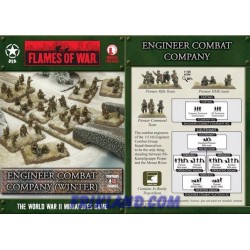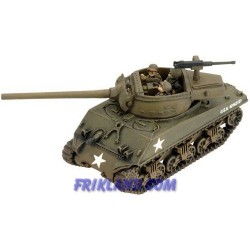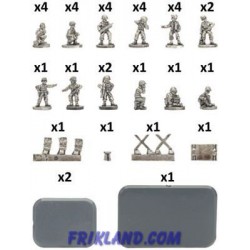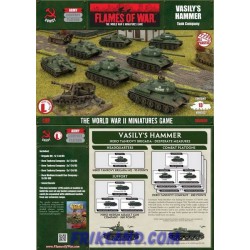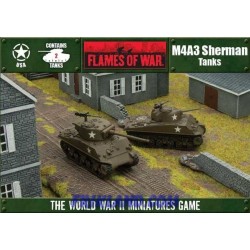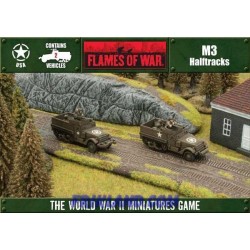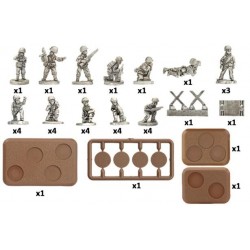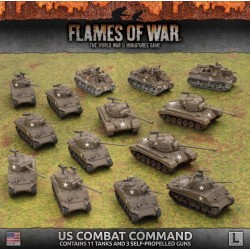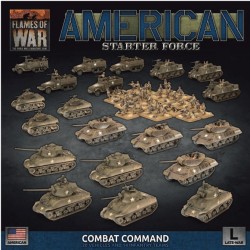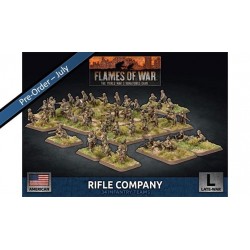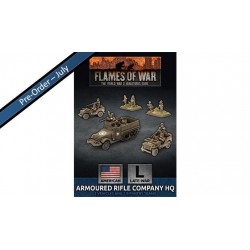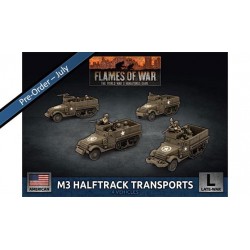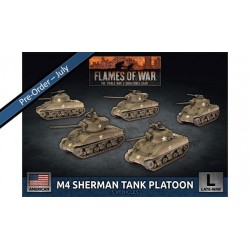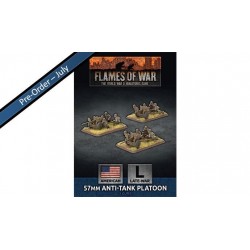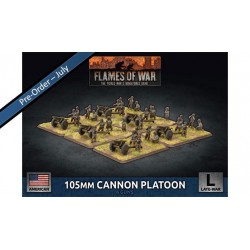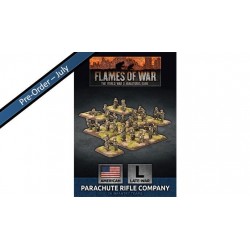Ningún producto
FoW - USA (cajas)
- Nuevos artículos
- Ofertas Especiales
- OUTLET
-
MDF Frikland
- Peanas
-
Cajas (juegos de cartas)
- Caja 1V Premium 1 carril
- Caja 2V Premium 2 carriles
- Caja 3V Premium 3 carriles
- Caja 4V Premium 4 carriles
- 5V Magna Box / Caja Magna (5 carriles)
- Caja 1H Premium 1 carril (horizontal)
- Caja 2H Premium 2 carril (horizontal)
- 4H Magna Box Landscape / Caja Magna Horizontal (4 carriles)
- Otras cajas
- Cajas Guarda Mazos
- Lorcana
- Insertos / Organizadores para Juegos
- Escenografía 28mm
- Escenografía 15mm
- Complementos para juegos
- Cajas Guarda Fotos
- Logotipos
- 3D Display
- Otras cajas
- Varios (mdf)
- Casas de muñecas
-
GAMES WORKSHOP
-
Age of Sigmar
- Básicos
- Libros y Manuales
- Broken Realms
- Bestias del Caos
- Bonereapers
- Caos
- Ciudades de Sigmar
- Condes Vampiro
- Daemons of Nurgle
- Demonios de Slaanesh
- Daughters of Khaine
- Gloomspite Gitz
- Greenskinz
- Fireslayer
- Flesh Eater (Necrófagos)
- Free peoples
- Idoneth Deepkin
- Kharadron Overlords
- Khorne Bloodbound
- Lumineth
- Malign Portents - Portentos Malignos
- NightHaunt
- Ogors
- Orruks
- Seraphon (hombres lagarto)
- Silvanos
- Slaves to Darkness
- Skaven
- Sons of Behemat
- Stormcast Eternals
- Soulblight Gravelords
- Tzeentch
- Escenografía
- Varios
-
Warhammer 40K
- Reglamentos
- Básicos (cajas y ejércitos)
- Apocalypse
- Adeptus Custodes
- Adeptus Mechanicus
- Adeptus Titánicus
- Aeldari (Eldars)
- Agentes Imperiales
- Ángeles Oscuros
- Ángeles Sangrientos
- Astra Militarum
- Battle of Sister
- Caballeros del Caos
- Caballeros Grises
- Caballeros Imperiales
- Caos (Marines Espaciales del Caos)
- Deathwatch
- Death Guard
- Demonios del Caos
- Drukhari
- Eldar Oscuros
- Genestealer Cult
- Harlequin
- Ligas de Votann
- Lobos Espaciales
- Necrones
- Marines Espaciales
- Mil hijos
- Orkos Espaciales
- Primaris
- Taus (Tau's Empire)
- Templarios Negros
- Tiránidos
- Ultramarines
- World Eaters
- Escenografía
- White Scars
- Varios
- The Old World
- La Herejía de Horus
- Warcry
- Kill Team
- Middle Earth Strategy Battle Game
- Underworlds
- Necromunda
- Citadel-
- Juegos
- Bloodbowl
- Warhammer Fantasy
- El Señor de los Anillos
- El Hobbit
- Revista White Dwarf
- Black Library
-
Age of Sigmar
- Mesas, estantes y organizadores
-
MINIATURAS
-
Flames of War
- FoW - Juego
- FoW - Reglamentos y libros
- FoW - Wargames Illustrated
- FoW - Japoneses
- FoW - Alemanes (cajas)
- FoW - Alemanes (blisters)
- FoW - USA (cajas)
- FoW - USA (blisters)
- FoW - UK (cajas)
- FoW - UK (blisters)
- FoW - Soviéticos (cajas)
- FoW - Soviéticos (blisters)
- FoW - Italianos (blisters)
- FoW - Franceses (cajas)
- FoW - Franceses (blisters)
- FoW - Polacos (Blisters)
- FoW - Húngaros
- FoW - Rumanos
- FoW - Finlandeses
- FoW - Griegos
- FoW - Escenografía
- FoW - Pinturas y Sprays
- FoW - Dados plantillas
- FoW - Especiales
- FoW - Polacos (cajas)
- FoW - Arab Israel War
- FoW - Great War
- FOW - Team Yankee
- FoW - Africa
- NAM/Tropic Lightning
-
Mantic Games
-
Kings of War
- KoW - Básicos
- KoW - No muertos
- KoW - Ogros
- KoW - Basileos (Humanos)
- KoW - Elfos Oscuros
- KoW - Orcos
- KoW - Enanos
- KoW - Enanos Abisales
- KoW - Elfos
- KoW - Mega Army
- KoW - Forces of the Abyss
- KoW - Forces of Nature
- KoW - Accesorios
- KoW - Salamanders
- KoW - Empire of Dust
- KoW - Goblins
- WP - Plague
- KoW - Trident Realm
- KoW - Forces of the Abyss
- KoW - Especiales
- Alianza del Norte
- Manuales Y Reglamentos
- KoW - Halflings
- Armada
- Vanguard
- DeadZone
- Dreadball
- Dungeon saga
- Star Saga
- The Walking Dead - All Out War
- Warpath
- Overdrive
- Firefight
-
Kings of War
- Knight Models
- 1650 - A capa y espada
- Ammo mig
- Bolt Action
- Dark Age
- Darky Angles Models
- Dropzone Commander
- Dust Tactics
- Frostgrave
- Euphoria Miniatures
- FireForge
- Freebooter
- GaleForce9
- GameZone
- Harry Potter (de Knight Models)
- Home Raiders
- Infinity The Game
- Juego de Tronos
- Knightmare Miniatures
- Juegorama
- Kensei
- Kromlech
- Malifaux / Wyrd Miniatures
- MOM Miniaturas
- Para Bellum
- Plastic Soldier
- Rage Resin Models
- Punkapocalyptic
- Relic Knights
- Resina Planet & Euphoria
- Ronin
- Song of Ice & Fire (inglés)
- Stalingrad: Infierno en el Volga
- Starfinder
- TANKS
- Tercio Creativo
- Torii
- V&V
- Wargames Atlantic
- Wild West Exodus
- Xyston Miniatures
- Yedharo
- Zenit Miniatures
- Zombicide
-
Flames of War
- Revistas
-
PINTURAS, PINCELES,...
-
Vallejo
- Xpress Color
- Set Pintura VJ
- Pinceles VJ
- Model Color
- Game Color 2022
- Game Color
- Panzer Aces
- Lavados / Model Wash
- Model Air
- Game Air
- Aerógrafos y auxiliares
- Pigmentos
- Sprays & Imprimación
- Metal Color
- Premium Color
- Weathering effects
- Auxiliares
- AFV painting sistem
- revistas
- Barniz
- Texturas
- Herramientas
- Otras Pinturas
- The Army Painter
-
AMMO de Mig Jiménez
- Revista-AMMO
- Libro-AMMO
- Sets de pintura-AMMO
- Pigmentos-AMMO
- Imprimaciones-AMMO
- Productos auxiliares-AMMO
- Efectos en esmalte-AMMO
- Efectos de escurrido en esmalte-AMMO
- Lavados en esmalte-AMMO
- Barnices-AMMO
- Pinturas Acrílicas-AMMO
- Weathering Sets-AMMO
- Pinturas metalicas AMMO
- Lavados para paneles
- Texturas - AMMO
- Oilbrushers
- Pinceles
- Aerografo-AMMO
- Pinturas metalicas alclad 2-AMMO
- Shaders
- Streaking Brushers
- Lavados Acrílicos
- Filtros-AMMO
- AK Interactive
- RedGrass
- Winson & Newton
-
Vallejo
-
ESCENOGRAFIA
- Escenografía MDF Frikland
- AMMO de Mig Jiménez
-
Bandua
- BN - Designed for Infinity
- BN - Varios
- BN - Escenografia 15mm
- BN - Cajas de Dados
- BN - Accesorios de Pintura
- BN - Tokens
- BN - Designed for KoW
- BN - Peanas 25mm
- BN - Peanas 32mm
- BN - Peanas 40mm
- BN - Peanas 50mm
- BN - Peanas 60mm
- BN - Peanas 55mm
- BN - Peanas Varias
- BN - Ages of Saga
- BN - Ready for Battle
- BN - Módulos Fidalgo
- Gamer`s Grass
- Gale Force 9
- Mantic Terrain Crate
-
Micro Art Studio
- MAS - Bases Cuadradas
- MAS - Bases Redondas
- MAS - Bases Redondas con reborde
- MAS - Bandejas de Movimiento
- MAS - Designed for Infinity
- MAS - Miniaturas de Mundodisco
- MAS - Miniaturas de 28mm
- MAS - Miniaturas de Wolsung
- MAS - Miniaturas de 70mm
- MAS - Escenografia de resina
- MAS - Escenografia de foam
- MAS - Escenografia de HDF
- MAS - Accesorios
- MAS - Rubber Molds
- MAS - Conversion Lab
- Escenografía MAS
- Varios MAS
- Bases Cuadradas MAS
- Miniaturas 28mm MAS
- Bases Redondas MAS
- Mystical World
- Pablo el Marqués
- Plast Craft Games
- Wargfield
- Resina Planet
- Ziterdes
- Vallejo
- Complementos
- Magic The Gathering
-
Juegos de Mesa
- Arkham Horror LCG
- asmodee
- Battlelore
- Cartas
- Catán
- Carcassonne
- Descent
- Devir
- Diversión y Fiesta
- Diset
- Draco Ideas
- Estrategia
- Doctor Who
- familiares
- Fundas para cartas
- Importación
- Juegos de Dados
- Juegos en Ingles
- Journey: La ira de los demonios
- Legado perdido
- Para 2 jugadores
- Rail Raiders Infinite
- Pandemic
- Runewars
- Señor de los Anillos
- Star Trek: Ascendancy
- Star Wars Imperial Assault
- Star Wars X-Wing
- Star Wars: Armada
- Tablero
- Varios
- Way of Fighter
- Zombies
- Viajes por la Tierra Media
- Juegos de Rol
- Merchandising
- Libros
- FrikStore
Productos más vistos
-

US Engineer Combat...
Descatalogado
Novedades
-

THE DEAD KINGDOM (HB)
20,00 € -

CHILDREN OF TECLIS (PAPERBACK)
10,80 € -

PATRULLA DE ORKOS
100,00 € -

PATRULLA DE ADEPTUS CUSTODES
100,00 €
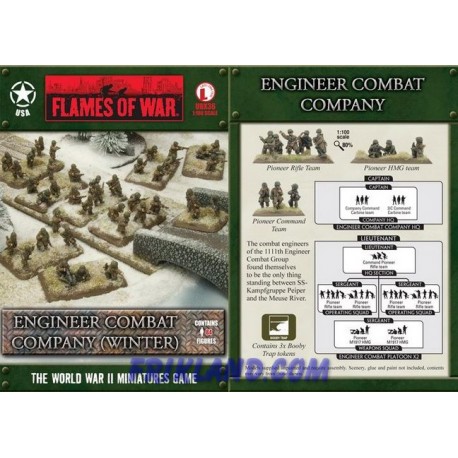 Ver más grande
Ver más grande
US Engineer Combat Company (Winter)
FOW-UBX36
Nuevo producto
Descatalogado
Más
includes one Company Command Carbine team, 2iC Command Carbine team, two Platoon Command Pioneer Rifle teams, two Engineer Combat Platoons with two Operating Squads & one Weapons Squads, four optional Operating Squads, three Booby Trap tokens, four Small three-hole bases, four Medium four-hole bases & twelve Medium five-hole bases.
The 291st joined the 51st and 202nd Combat Engineer Battalions, forming the 1111th Engineer Group attached to the US V Corps. The group followed in the charge across France, rebuilding bridges destroyed by the Germans.
December 1944 found the 291st sprawled across a large but relatively quiet sector in Belgium. Elements were stationed in Malmédy, Stavelot, La Gleize, and Trois-Ponts among other smaller outposts.
As far as the engineers knew, they were safely tucked away behind the 106th Infantry Division, several miles back from the front lines.
Like other US forces in the Ardennes, the German attack left the engineers isolated from V Corps and on their own. Confused and often conflicting reports drifted into Colonel Pergrin’s headquarters, but he quickly worked out that the Germans were up to something big. He collected his battalion from their remote outposts and established roadblocks at key locations such as Stavelot, La Gleize, Trois-Ponts, Amblève, and Malmédy.
Soon, the engineers had platoons of the shattered 106th Infantry Division and the counter-attacking 7th Armored Division passing through their position. Pergrin pleaded in vain with both divisions to spare men to stay and help defend the town. None stayed, however he did inherit several abandoned anti-tank guns, a vital boost to his force that had minimal anti-tank assets.
At noon on 17 December a column of 140 men from the 285th Field Artillery Battery Observation Battalion, attached to the 7th Armored, ran into one of Pergrin’s roadblocks. The artillerymen ignored warnings that the enemy was operating in the area, and pushed on. Then, between 1530 hours and midnight, 17 wounded survivors limped their way back to the 291st.
After debreifing the survivors, Pergin learned that observers had run into Peiper’s column and after a quick firefight they surrendered. Then suddenly, Peiper’s men opened fire on the prisoners of war, killing 84 of them in cold blood. Pergrin quickly dispatched patrols to the site to collect more survivors and then reported the incident to Allied command.
At 1930 hours, 17 December, Peiper’s leading panzers approached one of the hidden roadblocks manned by Sergeant Chuck Hensel’s squad from C Company. The men had set up daisy chains of several mines tied together by a rope, which could be pulled across the road in front of approaching panzers. As the Panthers moved closer, one of the engineers let loose a bazooka round which smashed harmlessly into the front of the leading tank. The Germans hesitated and withdrew, thinking the road was heavily defended. In actual fact, only Hensel and his few engineers stood between them and the vital Stavelot bridge!
Meanwhile, two companies of armoured infantry and four 3” anti-tank guns took up defensive positions in Stavelot. After a short fight, the Germans managed to storm the bridge and bypass the bulk of the American defenders. Thinking Stavelot was secured, Peiper carried on pushing west.
From Stavelot, he sent a small force of Panzer IV tanks and pioneers to Wanne to capture a crossing south of his next objective. His own troops focused on the Trois Ponts. Separated by the Amblève River, the two forces closed on their objectives, but Pergrin’s engineers were one step ahead of them and both bridges were sent into oblivion with TNT just as the panzers approached. Peiper’s southern task force had to return all of the way back to Stavelot in order to cross the Amblève and rejoin the main force, wasting precious fuel. Peiper’s own force abandoned Trois Ponts and wandered north along the Amblève looking for a suitable crossing.
Frustrated, Peiper found a hidden crossing overlooked by the engineers and finally crossed the river. However, Peiper’s new position was given away by an intense fighter-bomber attack which alerted the engineers. There was only one place Peiper could be going: Habiémont.
A truckload of TNT arrived just in time at Habiémont bridge, and once again as the panzers approached, the bridge exploded. Peiper slammed his fist on his Panther and exclaimed, “The damned engineers. The damned engineers!”
As Peiper’s column sped beyond the reach of the 291st, help arrived at Malmédy. Two 90mm anti-aircraft guns, the 99th Infantry Battalion (Separate), the 526th Armored Infantry Battalion, and the 825th Tank Destroyer Battalion bolstered the engineers just in time as Otto Skorzeny’s 150. Panzerbrigade attacked on 21 December. The 99th held the line, while the engineers manned roadblocks and set up ambushes, helping to repel Skorzeny’s assault. After Malmédy, the 291st joined the rest of the V Corps in eradicating the ‘bulge’, rebuilding bridges and paving the way.
By war’s end, the 291st had made seven river assaults and constructed 74 bridges, 11 of which were built under fire, including a record setting 1000-foot (300m) bridge built at Remagen in 32 hours. For their actions, the 291st was awarded a Presidential Unit Citation.
Designed by Evan Allen
Painted by Aaron Mathie
Reseñas
No hay reseñas de clientes en este momento.




